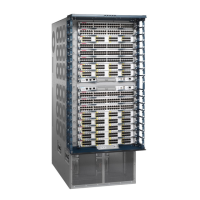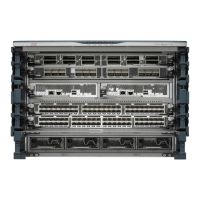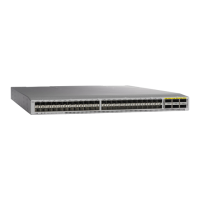Send document comments to nexus7k-docfeedback@cisco.com.
6-35
Cisco Nexus 7000 Series NX-OS Unicast Routing Configuration Guide, Release 4.x
OL-20002-02
Chapter 6 Configuring OSPFv2
Configuring Advanced OSPFv2
Configuring Route Summarization
You can configure route summarization for inter-area routes by configuring an address range that is
summarized. You can also configure route summarization for external, redistributed routes by
configuring a summary address for those routes on an ASBR. See the “Route Summarization” section
on page 6-10.
BEFORE YOU BEGIN
Ensure that you have enabled the OSPF feature (see the “Enabling the OSPFv2 Feature” section on
page 6-14).
Ensure that you are in the correct VDC (or use the switchto vdc command).
SUMMARY STEPS
1. config t
2. router ospf instance-tag
3. area area-id range ip-prefix/length [no-advertise]
or
4. summary-address ip-prefix/length [no-advertise | tag tag-id]
5. show ip ospf summary-address
6. copy running-config startup-config
DETAILED STEPS
Command Purpose
Step 1
config t
Example:
switch# config t
switch(config)#
Enters configuration mode.
Step 2
router ospf
instance-tag
Example:
switch(config)# router ospf 201
switch(config-router)#
Creates a new OSPFv2 instance with the configured
instance tag.
Step 3
area
area-id
range
ip-prefix/length
[no-advertise]
Example:
switch(config-router)# area 0.0.0.10
range 10.3.0.0/16
Creates a summary address on an ABR for a range of
addresses and optionally does note advertise this
summary address in a Network Summary (type 3)
LSA.
Step 4
summary-address
ip-prefix/length
[no-advertise | tag tag]
Example:
switch(config-router)# summary-address
10.5.0.0/16 tag 2
Creates a summary address on an ASBR for a range of
addresses and optionally assigns a tag for this
summary address that can be used for redistribution
with route maps.

